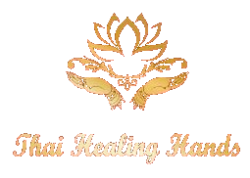Thai Healing Hands
You're only one massage away from healing your body
History of Thai Massage
It’s an ancient form of healing
Thai massage, also known as Nuad Thai or Thai Yoga Massage, is a traditional healing practice that dates back over 2,500 years. It originated in India and was introduced to Thailand by Buddhist monks who traveled to the region to spread their teachings.
Thai massage combines elements of Ayurveda, yoga, and traditional Chinese medicine, making it a unique blend of various healing systems. The practice is rooted in the belief that energy lines, known as Sen, run throughout the body. These lines are akin to the meridian channels in Chinese medicine and are essential for maintaining health and well-being.
The founder of Thai massage is believed to be Shivago Komarpaj, a revered physician of ancient India. He was a contemporary of Gautama Buddha and the personal physician to the Buddha himself. Shivago’s teachings were passed down through generations of Thai healers, refining and evolving the practice over time.
Originally, Thai massage was primarily used as a therapeutic modality to treat a wide range of ailments. It was commonly practiced in temples, as part of religious ceremonies and rituals, and was an integral part of traditional Thai medicine. The massage was used not only to address physical concerns but also to promote emotional well-being and spiritual growth.
Over the centuries, Thai massage techniques were influenced by various cultural practices, resulting in a distinct style that is now recognized worldwide. In the mid-20th century, Thailand’s Ministry of Education formalized the teachings and techniques of Thai massage, establishing the first official school for the practice. This milestone led to the standardization and wider spread of Thai massage both within Thailand and internationally.
Today, Thai massage is cherished for its holistic approach, addressing the body, mind, and spirit. Techniques used in Thai massage include deep compressions, rhythmic rocking, acupressure, passive stretching, and yoga-like postures. The practitioner uses their hands, thumbs, knees, elbows, and feet to apply pressure along the Sen lines, promoting the flow of energy and releasing blockages.
Thai massage is widely regarded for its numerous benefits, which include stress reduction, improved circulation, enhanced flexibility and range of motion, relief from muscle tension, increased energy levels, and overall relaxation. It has gained popularity as an alternative therapy, finding its place in spas, wellness centers, and clinics worldwide.
As Thai massage continues to evolve, new variations and techniques are being developed while still staying true to its ancient roots. It remains a cherished art form and a powerful healing modality, offering a unique and transformative experience to those who seek it.
Therapeutical Benefits of Thai Massage
Provides spiritual, mental and physical healing and is excellent for feeling relaxed and refreshed.
Increases Range of Motion and Flexibility
Helps in improving your flexibility and range of motion by increasing blood flow and oxygenation to the muscles.
Helps with Relieving Muscles and Pains
It has the ability to help relieve muscle pain and soreness. The thai massage stretch and uses pressure point to help reduce tight spots in the muscles.
Helps Promote Mental Calmness
If you have anxiety, stress. Thai massage can be calming and relaxing this in turn helps quiet and relax the mind and body which help lower stress and anxiety.
Reduced headache pain
If you have tension headaches or migraines caused by cervicogenic pain, Thai massage session may help reduce their intensity by relaxing the tightness of the neck and shoulders muscles.
